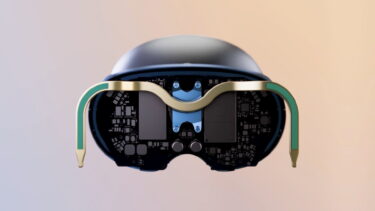Qualcomm's Meta Quest Pro chip is just a taste of what's to come

Meta Quest Pro is the first headset that uses the Snapdragon XR2+ Gen 1. However, the chip is not that new.
The Snapdragon XR2 Gen 1 has been the standard chip for standalone headsets that use Android as the operating system since 2020: The SoC powers Meta Quest 2 (2020), HTC Vive Focus 3 (2021) and Pico 4 (2022), among others.
However, the premium headset Meta Quest Pro relies on a new chip that manufacturer Qualcomm markets under the name Snapdragon XR2+ Gen 1.
According to Qualcomm, the SOC offers 50 percent higher continuous performance and 30 percent better heat dissipation compared to the Snapdragon XR2 Gen 1 of the Meta Quest 2.
This increase is due to a spatial separation of chip and RAM, as hardware analyst Brad Lynch reported back in August. RAM typically sits directly on top of the chip, which lowers manufacturing costs but generates more waste heat.
What Carmack says about the "new" chip
Heat is one of the most significant challenges in designing standalone headsets. The Meta Quest 2's XR2 is known to run at half CPU load to avoid overheating.
Meta's VR tech consultant John Carmack said during his recent Connect talk that the XR2+ Gen 1 has the same processing cores as its predecessor, but is built to address more RAM and dissipate heat better, so you can clock the chip higher. Meta Quest Pro has 12 GB of RAM, twice as much as Meta Quest 2.
"The heat dissipation is a really big deal and there are some specific details around the chip packaging that means you can't just necessarily slap a bigger heatsink on this, sometimes you need to change the way the entire chip is packaged," Carmack says.
XR2+: Extra power flows into new hardware features
An important question is how much apps will benefit from the added performance of the XR2+ Gen 1. According to Meta, the 50 percent additional performance "refers to the increased SoC power that supports additional sensors and new use cases," and apps that don't take advantage of these features would only have "a little more performance headroom," UploadVR reports.
In other words, most of the XR2+ Gen1's increased performance goes to the Meta Quest Pro's eye and face tracking and higher-end passthrough.
Qualcomm says the XR2+ Gen1 won't be sold only to Meta. Other OEMs are expected to announce devices with the chip by the end of the year. According to Brad Lynch, there is not much interest because the next and much more powerful generation of the XR2 chip, the Snapdragon XR2 Gen 2, is already waiting in the wings.
Next-gen chip could be unveiled soon
Lynch reported in early October that the brand-new SoC will be based on the still unannounced Snapdragon 8 Gen 2: Qualcomm's latest high-end chip that is supposed to power premium smartphones of 2023.
According to Lynch, the GPU alone could bring a 2.5- to 3-fold performance increase over the Meta Quest 2's XR2 chip (see video below). The chip will be announced at Snapdragon Summit in November and will be featured in the Meta Quest 3.
In his Connect talk, Carmack confirmed that Meta and Qualcomm are working on a "true next-generation XR2 chip." The two companies announced a deeper partnership in September to develop XR chips for autonomous headsets.
"There are several very custom VR-specific features going in that. I'm excited beyond just the normal CPU and GPU advances that you're pretty much expecting," Carmack said regarding the new chip. "I do kind of worry though that it's a very high-end chip, and we may need something low-end targeted for inexpensive VR headsets in the future though."
Note: Links to online stores in articles can be so-called affiliate links. If you buy through this link, MIXED receives a commission from the provider. For you the price does not change.